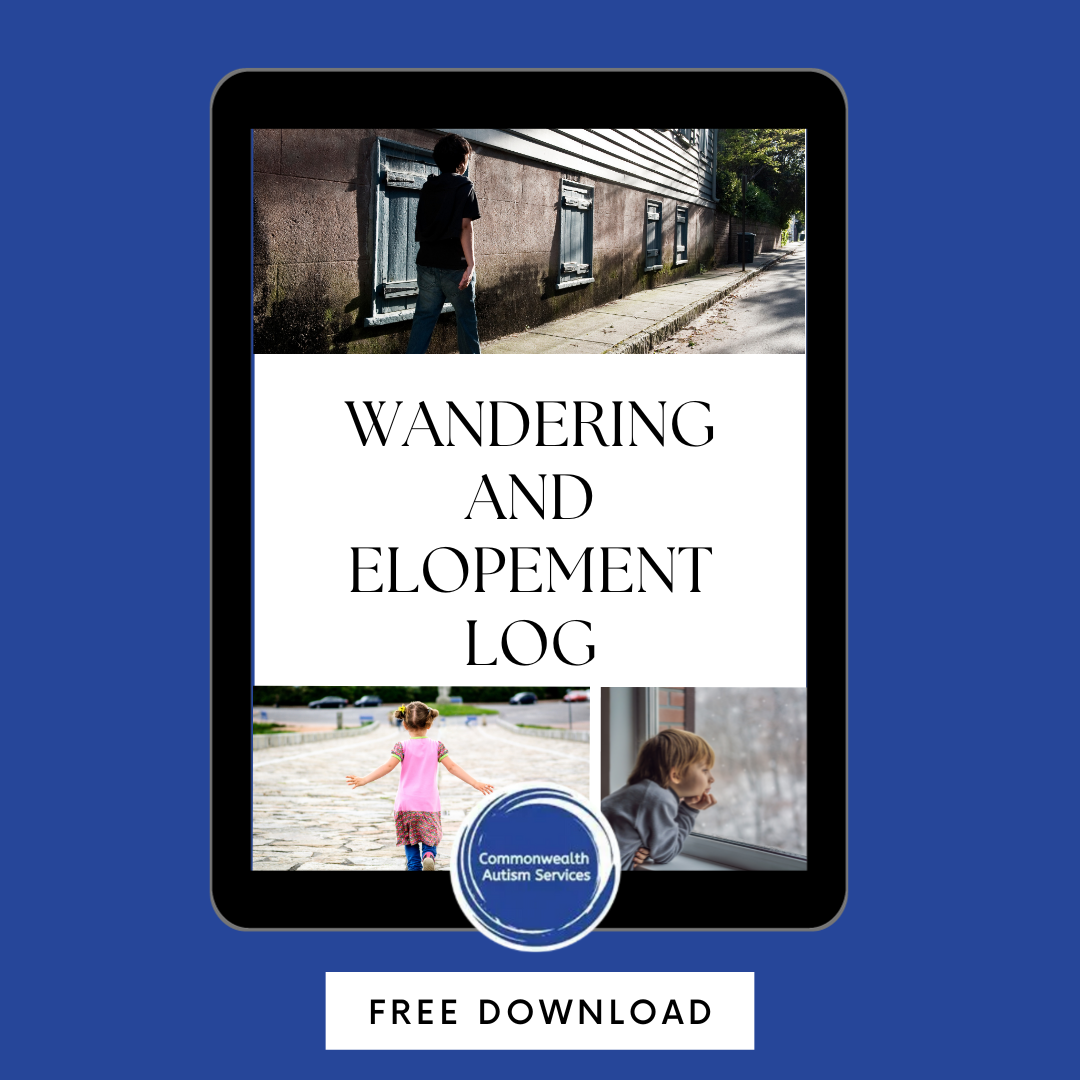Wandering and Elopement
Wandering and elopement are serious concerns for individuals with autism. It impacts the safety and well-being of individuals with autism and causes significant distress for families. Here we will explore the prevalence of wandering and elopement among children with autism, discuss the importance of developing a comprehensive plan, and share insights on how to keep data to identify patterns for effective treatment planning. Additionally, we're providing a free wandering and elopement log for you to download.
What is Wandering and Elopement?
Wandering and elopement is when an individual leaves a safe space without permission or supervision. Individuals with autism may leave their home or school and wander into an unsafe area. Risks are magnified for individuals with autism due to limited safety and communication skills.
Wandering and Elopement Statistics
There have been several studies examining safety concerns for individuals with autism. Wandering and elopement concerns were found to be a critical issue. The National Autism Association’s 2017 study shows nearly half of all children with autism have attempted to elope, which is 4 times the rate of children without autism. The same report also found that accidental drowning accounts for approximately 90% of lethal outcomes among individuals with autism who wander.
Finding a Solution
There is usually not a simple solution. For example, families are often told to put a stop sign on their front door. The hope is children will see the sign and not leave the home. This is often not an effective solution for many reasons. Has the child been taught what the stop sign means and what they should do when they see it? Do you know why the child is leaving the home? Is it to be chased or to access the neighbor’s swing set? A stop sign is an effective tool only when it is part of a larger plan.
To make a permanent impact, wandering and bolting needs to be addressed through a comprehensive plan. The plan should address the individual’s needs using short- and long-term interventions. Commonwealth Autism Services has developed the Fusion Formula. Our system will help you bring these pieces together into one, comprehensive Autism Home Safety Plan. To learn more about our Fusion Formula and enroll into one of our courses, visit our course page.
Keeping Data to Development an Effective Plan
To address wandering and elopement, we need to understand why and how the behavior is occurring. Is Timmy leaving the home because he likes to be chased or to play on the neighbor’s swing set? Is Sally leaving the home during the afternoon transition through the front door or climbing through her bedroom window at night? The plan to address each of those situations would be very different.
A log is a helpful tool families can use to answer these questions. It will collect crucial information to help determine patterns. These patterns will help you develop an effective plan. Our free wandering and elopement log, which you can download at the end of this post, will help you track each occurrence. Note the time, location, triggers, and any specific behavior leading up to the event. The more information you can provide, the more tailored your plan can be.
Wandering and elopement are complex challenges, but with the right approach and support, you can help keep an individual with autism safe. The key is to start by developing a comprehensive plan, keeping detailed data, and seeking professional guidance. Remember, you are not alone in this journey, and there are resources available to assist you in providing a safe and nurturing environment for your loved one.
Download Free Wandering and Elopement Log
Visit out free resources page for more free downloads.


